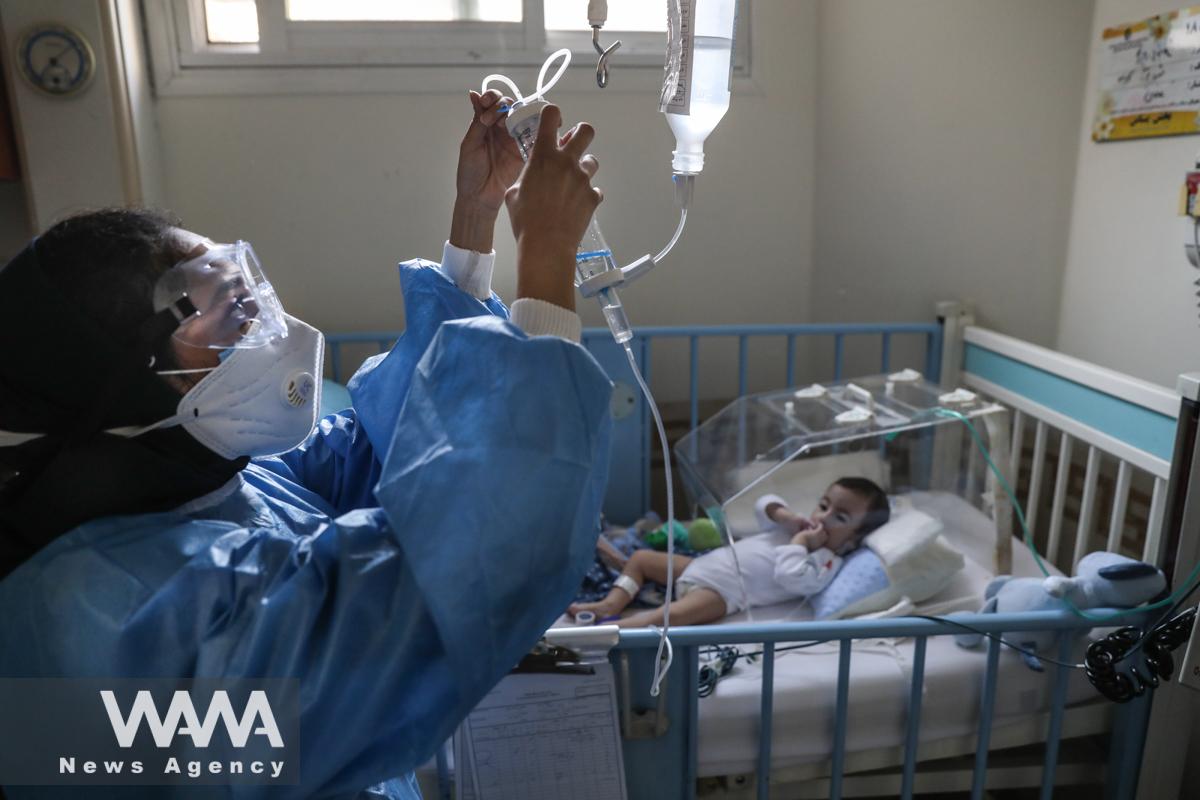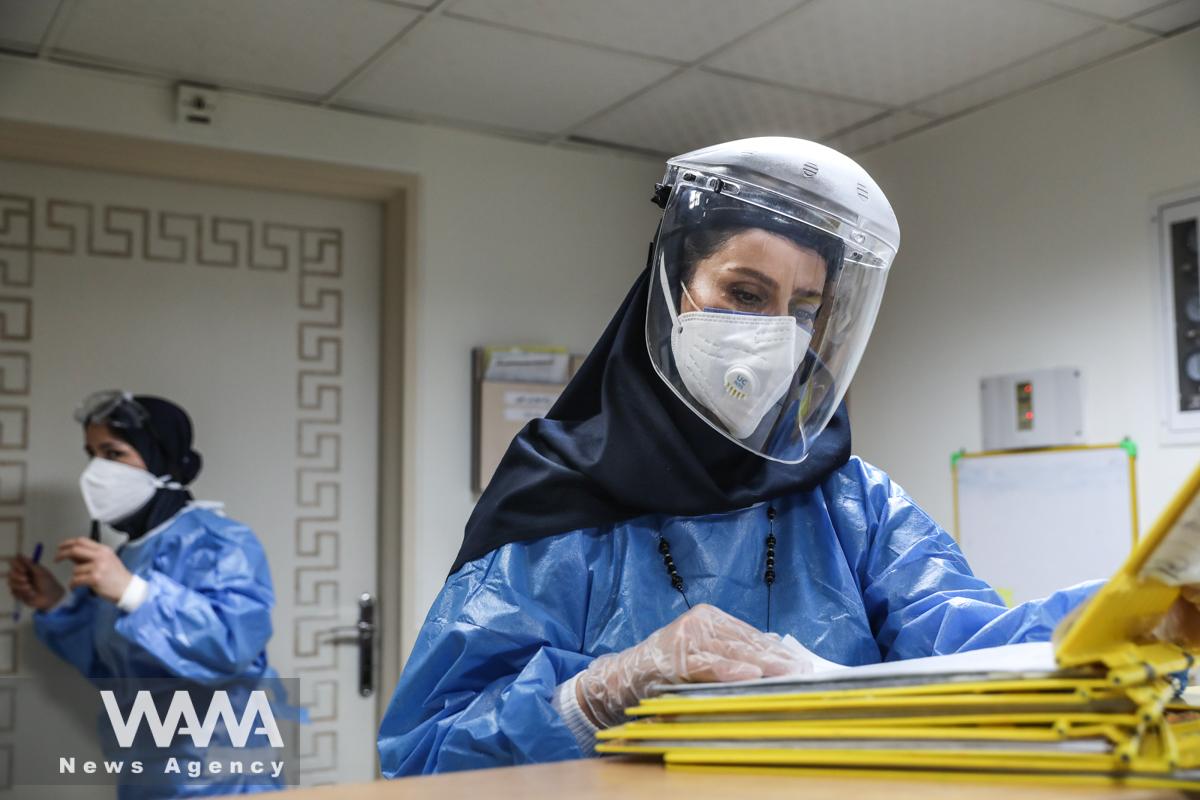WANA (Nov 12) – In the silence of Iran’s hospital halls, there are nurses who struggle not only with their patients but also with the temptation to leave. They have studied for years, stood beside patients day and night through the harsh conditions of the COVID-19 pandemic, but today, some have packed their bags for countries that pay several times more and show greater appreciation for their efforts.
The Real Need of Iran’s Healthcare System
According to the official Hospital Statistics Yearbook for 2022, Iran has around 1,054 active hospitals, of which 905 are general hospitals. With a population of nearly 90 million, the country’s healthcare system needs about 260,000 nurses to meet the minimum global standard.
However, according to Dr. Ahmad Nejatian, the head of the Iranian Nursing Organization, there are currently only 160,000 nurses employed in the country—around 100,000 fewer than what is actually needed.
In other words, while the global standard is about 3 to 6 nurses per 1,000 people, Iran has only 1.6 nurses per 1,000 people, according to Sharifi Moghadam, the Secretary-General of the Iranian Nurses’ Association.
A nurse at Hazrate Ali Asghar Hospital in Tehran, Iran, September 27, 2020. Majid Asgaripour/WANA (West Asia News Agency)
Education and the Cost That Ends in Migration
Every year, about 17,000 to 18,000 students enter Iran’s nursing schools, but the employment capacity in the country’s hospitals—most of which are state-run—is only 5,000 positions, roughly equal to the number of nurses who retire annually. This means the country is effectively standing still.
Iran is among the few countries that are self-sufficient in nurse training, yet due to the mass departure of skilled personnel, it now faces a shortage. According to official estimates, each nurse who emigrates takes with them approximately 45,455 US dollars of national investment.
According to Abbas Ebadi, Deputy Minister of Nursing at the Ministry of Health, in the year 2024 alone, more than 570 Iranian nurses migrated, causing an estimated loss of approximately 36,364,000 US dollars to the educational system.
On a global scale, the shortage of nurses is a widespread issue—the world currently lacks 9 million nurses compared to its needs. This is often attributed to low population growth rates in many countries; however, Iran’s case is different, as it is both self-sufficient in education and has a favorable population size.

WANA (Feb 07) – Opponents of the Islamic Republic of Iran have consistently criticized various aspects of governance in Tehran, from economic and political issues to military and security matters. However, among these criticisms, the country’s education system has received relatively little attention. This is not to suggest that the Islamic Republic is […]
Why Do Nurses Leave?
The answer can be summed up in one sentence: low wages, heavy workload, and job insecurity.
According to reports, about 90 percent of nurse migration is due to financial reasons. Seyed Mohammad Alavi, a clinical nurse and union activist, says: “The livelihood problems of nurses and the failure to implement their employment status changes have caused many to migrate. The salary and benefits of nurses who have emigrated to Oman are six times higher than those of nurses working in Iran.”
In Western and Arab countries, the annual income of nurses is significantly higher than in Iran:
United States: about $82,000 per year
Denmark: $58,000 per year
Iran, in this regard, even lags behind Saudi Arabia. In Iran, a nurse earns around $250 per month—sometimes even less than the rent of a small apartment in Tehran.
Job burnout is another major issue. Heavy workloads, long shifts, staff shortages, and delayed payments have pushed many nurses either to change professions or to choose migration.
Nurses at Hazrate Ali Asghar Hospital in Tehran, Iran, September 27, 2020. Majid Asgaripour/WANA (West Asia News Agency)
“During COVID, we could barely breathe in those plastic suits, but we kept going. Now they still haven’t paid all our back wages. I feel like no one understands the value of our work,” said Fatemeh, an ICU nurse from Isfahan.
If the Trend Continues…
If this silent exodus continues, Iran’s healthcare system will soon face a multifaceted crisis. On one hand, the aging population will increase the demand for nursing care; on the other hand, the shortage of personnel will lead to a decline in the quality of medical services, more medical errors, and heavier workloads for the remaining nurses.
“The elderly population is growing, but the workforce is shrinking. In a few years, every elderly household will need specialized care—who will provide it then?” wrote Nazanin, a user on X, criticizing the government’s failure to create proper conditions for nurses.
Another user named Sotoudeh, who is a nurse, replied: “Forget a few years from now—even right now, intensive care units are sometimes practically left without nurses. We’re already working double shifts just to make sure no patient is left unattended. Many students who haven’t even stepped into a hospital yet are already thinking about leaving.”

WANA (Aug 01) – Amir, 28 years old, is a computer engineering graduate from Sharif University of Technology. Two years ago, he was accepted by a reputable German university and even progressed to the final stages of the administrative process of emigration. But at the last moment, he decided not to go. “You could […]
According to experts’ warnings, if this trend continues, within the next decade, Iran may reach a point where even training tens of thousands of new nurses each year will not be enough to fill the gap.
Efforts to Retain the Workforce
In recent years, the Iranian government has taken several measures to improve conditions:
Hiring 27,000 new nurses
Revising the overtime payment formula
Planning to provide housing for nurses through dormitories and organizational residences
However, these policies have so far had little impact, and it seems that until fair wages and proper professional dignity for nurses in Iran are ensured, such measures will remain only temporary painkillers.
The migration of nurses is not merely the departure of a few skilled professionals; it is the loss of human and emotional capital from the heart of the country’s healthcare system.
It is time for Iranian officials—if they wish to withstand the global wave of healthcare workforce shortages—to view nurses not as a cost, but as a national asset—an irreplaceable investment. One that, if better valued, could also bring significant progress in the field of medical tourism.
An injured man treated in a hospital, amid the Iran-Israel conflict, in Tehran, Iran, June 21, 2025. Majid Asgaripour/WANA (West Asia News Agency)



